|























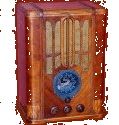

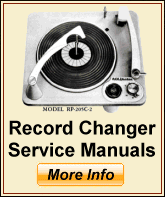
|
 |

Early Records: Edison vs. Victrola
What's the difference?
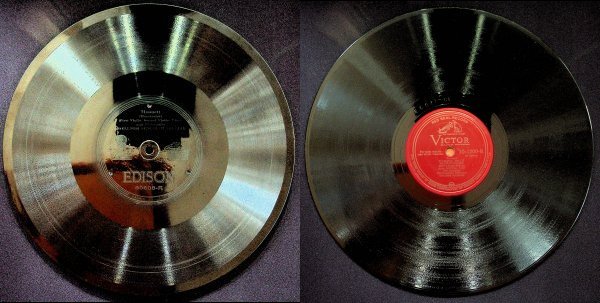
Why can't you play an Edison record on a Victrola? (and vice versa)
There are many differences between Edison and Victrola records, thickness, materials, etc.
Here we will take a close look at the main difference as to why they're not interchangeable...
Hint: It's all in the grooves. |
Forced to compete with the public's growing preference for records over his cylinders, Edison introduced the ¼ inch thick Diamond Disc Record in 1912.
The Diamond Disk record got it's name because Edison utilized a diamond tipped stylus which did not have to be replaced after each play like a Victrola's steel point needle.
The Diamond Disk had more grooves per inch (150) than a standard Victrola record (100 grooves per inch) and offered a longer play time. Still, the number of grooves per inch was not the only difference that made the records incompatible.
|
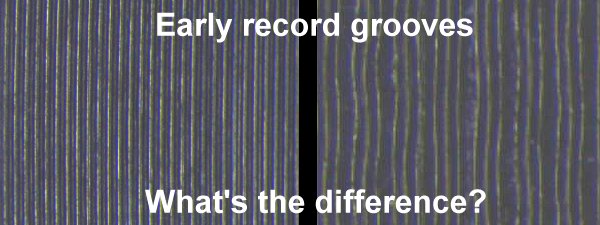
|
The grooves on the left above are from an Edison record. The photo on the right shows a Victrola records grooves.
As you can see, the Edison groves appear the be fairly straight with little side to side deflection.
The Victrola record grooves on the right vibrate a stylus/needle from side to side to reproduce sound.
If the Edison records grooves are straight then how does a needle riding in the groove pick up the sound?
Shown below, instead of moving a needle side to side (latterly) to pick up the sound, an Edison needle vibrates up and down. This makes an Edison record incompatible with other Victrola or Gramophone records of the time.
|
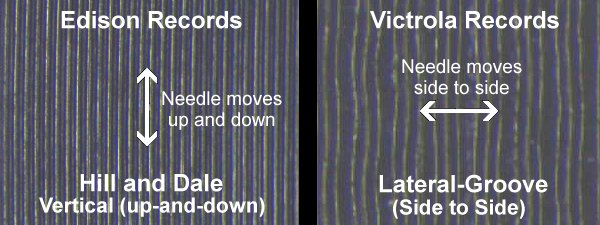
|
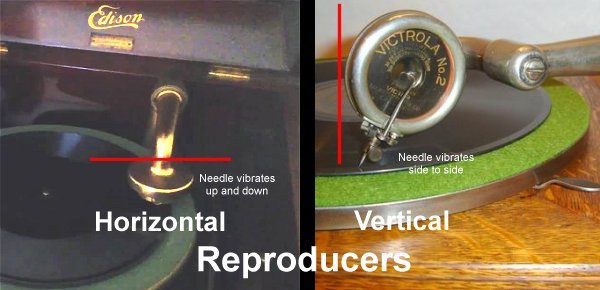
|
If the needles of an Edison and a Victrola pick up movement in different directions, then the round diaphragm inside the reproducer housing they are attached to also needs to be oriented in
a different direction to reproduce the vibrations and send them to a horn.
As you can see in the above left photo, the Edison diaphragm is parallel with the record to reproduce the up and down vibrations
while the Victor reproducer on the right is perpendicular to the record groves to pick up the side to side vibrations of the stylus.
|
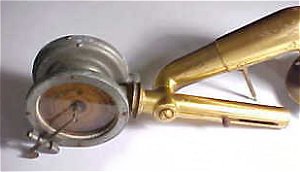 |
The solution for some manufacturers was to either provide two different reproducers that you could swap to play either an Edison or a Victrola record,
or, as Brunswick did at left, have one reproducer with two diaphragms that could be rotated 90 degrees. One diaphragm with a diamond disk needle
flipped horizontally for playing Edison records, and the other diaphragm fitted with steel needles, could be rotated vertically for playing standard Victrola records.
Video of a Bush & Lane Duo-Vox (dual reproducers) playing an Edison Diamond Disk record.
|
But why did Edison choose a different, incompatible system?
There were no standards for records at that point in time. Speeds already varied and Edison had been using the Hill and Dale (up and down) design on his cylinder records for many years.
Edison's Diamond Disk system actually produced better sound and records lasted much longer due to the reproducer being moved across the disk by a screw mechanism instead of wearing out the groove
by the needle tracking and using the groove to pull the reproducer across a record. Unfortunately, the higher cost of the records and a poorer selection of songs in the
Edison catalog eventually put an end to the Edison system.
I would guess that Edison may have also thought he would monopolize the record market with a higher quality system that had no compatible competition.
 |
 |
View the Edison Diamond Disk Operating Manual here:

|
|
|
|








